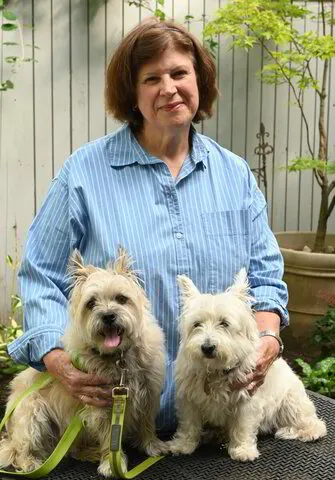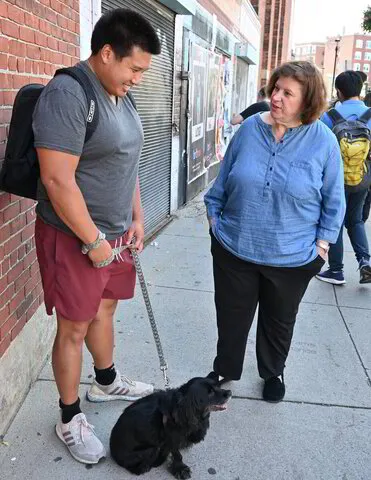Issues & Information
- Streets that work for all businesses and neighborhoods, are safe and accessible for all users
- Affordable housing for persons at all income levels supported by a comprehensive plan
- Fiscal transparency and accountability coupled with responsible and effective spending
- Practical and actionable steps to mitigate climate change in Cambridge
- Safe, vibrant, and livable neighborhoods for all ages, races and abilities
I will bring a strong municipal finance background from my experience at Standard and Poor’s Corporation to the Council. While at S&P, I was involved in assigning debt ratings to municipalities, water/sewer systems, healthcare, higher education and not for profit institutions. I know how important it is for Cambridge to maintain its strong financial position if it is to continue its AAA rating.
To maintain our fiscal strength, I will push the Council to evaluate new policies and programs with a focus on budget impacts before policy becomes law. Each new ordinance should have a rigorous upfront evaluation and be periodically reviewed for its effectiveness so there is fiscal accountability to our taxpayers.
There needs to be alignment between the council and tax payers on how their tax dollars are being spent, and to do that we need to increase transparency. The impact of our policies and programs on our taxes, our diversity goals and the city’s competitiveness should not be an afterthought.
Cambridge has long benefited from robust commercial and industrial development which has allowed its residential tax rate to remain low. However, the pandemic altered the way office space is being used and vacancy rates are creeping up. What does this mean for our residential tax rate? While we have $200M in free cash, we need to keep an eye on our spending to avoid the possibility of increasing the tax rate.
I will bring fiscal discipline to the council and ensure there is transparency and accountability to the residents and businesses for how their tax dollars are being spent.
I support creating more affordable housing for persons and families at different income levels so those who have lived in the city can continue to live in the city. To do this most effectively, the city should have an agreement on how much additional affordable housing to build, a thoughtful plan for where to build and how buildings will be designed as well as an assessment of infrastructure needs to support additional housing. The resulting built environment should be an important consideration of any plan supporting residents’ well being and health while meeting climate change challenges.
The Council should not jump now to amend the current AHO without this plan. The current proposed amendments — AHO2— significantly increase building height to twelve to fifteen stories, allow for increased density, removing front and side set backs, trading increased height for green space and no parking — have the potential to materially change the character and livability of our neighborhoods and city.
I feel strongly we should be building affordable housing that is designed within the context of the neighborhood with designs that complement existing structures, and with input from the neighborhood on important details such as height, set backs, green space and recognizes that parking is often required for these projects.
To be clear, I am not against increased height…..increased height may be appropriate and necessary to achieve our housing goals. However, it is important to note that most neighborhoods currently have nothing higher than 3-4 story buildings. Building design should take the neighborhood setting into consideration when determining building height and other features to complement existing structures.
Even though AHO2 is moving quickly forward in the Council, if it passes a new council will be able to make further amendments and complete the planning that is needed.
One model for the planning effort is the recent Alewife Overlay District process led by CDD and a working group with diverse backgrounds. It was positively reviewed by the Planning Board, strongly supported by Councillors and residents. This is the type of city wide planning effort we need for affordable housing so we are in agreement with clearly articulated goals based on input from neighborhoods and residents.
I look forward to joining the council to initiate this important planning effort with input from the various stakeholders leading to a clear goal and approach.
We need to find away for our streets to be safe for all users and workable for the small businesses and their customers, residents of all ages and abilities and their neighborhoods. And, most importantly, we need to ensure residents and businesses are part of the discussion.
Right now, our conversation has only been around separated bike lanes. But, they are just one part of the city’s complex transportation discussion. To view bike lanes as a standalone issue ignores Cambridge’s many other vital transportation needs, including public safety, delivery access for our small businesses, curb accessibility for seniors and mobility impaired individuals, as well as resident parking, parking for businesses, mass transit and safe pedestrian access. The unglamourous needs of the city itself for snow removal, trash removal, street repairs and paving, underground utility work all need to be accomplished on the same streets. However, Cambridge alone cannot fully address its transportation challenges. With neighboring communities, we should aggressively push the MBTA to improve bus and subway service and reliability which are important underpinnings of any plan.
With the elimination of travel lanes, installation of separated bike and bus lanes, congestion has increased. The goal of reducing green house gases through increased cycling activity is being offset by increased idling and travel times. Motorists take alternate routes through residential neighborhoods to avoid increased traffic making those streets less safe. These are the byproducts of a City Council approach to policy that focused on one issue to the exclusion of other important transportation needs.
How we achieve the goal of safe streets and manage important street activities requires a thoughtful, comprehensive transportation planning process especially for Mass Ave. We need robust data, careful analysis, and input from our stakeholders. Right now we have a one size fits all approach and we should bring in engineering and design assistance that recognize specific needs of different location.
It’s not too late to do this but the council has to have the willingness to engage without bias. Based on that analysis, the city council and the community together can properly evaluate trade offs involved with continuing the installations or implementing other street designs. Until then we should pause any further installations.
The distinctive character of Cambridge’s 13 neighborhoods makes the city an interesting place to live and work, and a unique destination for visitors. At the moment, the character of our neighborhoods is under assault from new and proposed policies. Proposed AHO amendments allowing for increased building heights as of right, proposed changes to neighborhood conservation districts and laws around historical buildings and landmarks and removal of parking minimums for new buildings will all change the character and livability of our neighborhoods. Installation of separated bike lanes has impacted small businesses and restaurants which are an important feature of vibrant neighborhoods. In the aggregate, these policies are increasing density, could result in buildings out of context with existing structures and put pressure on our neighborhood streets impacting the quality of life for residents and the character of our neighborhoods.
An open issue that impacts neighborhoods is the location of biotech and research lab space. It is hard to believe that Cambridge does not have zoning in place to regulate the location of labs given all the development that has already occurred in Kendall Square and other locations. I will push for this zoning to be brought back for discussion.
Change is inevitable and I will support efforts that are balanced proposals for development with an eye towards how they will change a neighborhood’s character. My aim is to find the `sweet spot’ where development is consistent with neighborhood context and keeps it strong, vibrant and livable for persons of all ages, races and abilities. Policies that impact neighborhoods must have a robust and authentic public process so the residents and businesses can help shape the decisions that will directly impact them.
Climate change is one of the most important and pressing issues to tackle and the solutions require a rethinking of every aspect of our lives.
There are several actions the city can take to mitigate the impacts of climate change and lower greenhouse gases that would be considered `low hanging fruit’ —-preserving green space and mature trees. Preserving green space especially in densely populated communities such as Cambridge not only improves the quality of life for its residents but provides important cooling opportunities. We should ensure these spaces are welcoming to all and ensure there is equitable access to them.
Mature trees, a feature of green spaces and street scapes, are an effective carbon recapture mechanism. When the city cuts down mature trees or fails to maintain the health of mature trees, it is in conflict with its climate goals. Cutting down mature trees only to be replaced by smaller trees that take years to mature is not a one-to one exchange.
A personal example of how I advocated for both green space and mature trees happened during the main library branch expansion. As head of the Mid Cambridge Neighborhood Association, I strongly advocated the library design preserve as much of the green space known as Joan Lorentz Park. The neighborhood also pushed the city to take efforts to protect the root system of the two mature copper beech trees during construction of the underground garage (They both survived the construction, although one just recently died.) Through our discussions, we were successful in achieving two goals— a wonderful new library as well as a highly valued green space for both the neighborhood and the city.
The city has taken bold action to reduce greenhouse gases with the passage of BEUDO but now the difficult work of implementing it is before us. We need to partner with Eversource to have a clear picture of the requirements to electrify Cambridge, understand the space requirements for sub stations, transmission and distribution requirements. In other words, we need to jointly develop a plan for how we implement the ordinance. We need to be prepared to provide technical assistance to businesses and those large buildings impacted by the Ordinance. Passing the Ordinance was an important step and now the city needs to be prepared to support the successful implementation if we are to have a meaningful impact on climate change.

